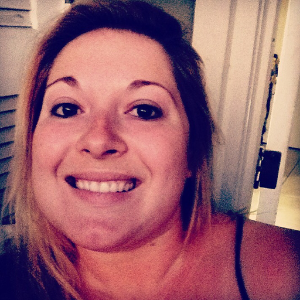Jul 24, 2020
PBMC Isolation
This protocol is a draft, published without a DOI.
- 1University of California, San Diego
- George Lab @ UCSDTech. support email: olgeorge@ucsd.edu

Protocol Citation: Sierra Simpson, Olivier George 2020. PBMC Isolation . protocols.io https://protocols.io/view/pbmc-isolation-babiiake
License: This is an open access protocol distributed under the terms of the Creative Commons Attribution License, which permits unrestricted use, distribution, and reproduction in any medium, provided the original author and source are credited
Protocol status: Working
We use this protocol and it's working
Created: December 10, 2019
Last Modified: July 24, 2020
Protocol Integer ID: 30794
Abstract
Isolation of peripheral blood monocytes (PBMC) for later expansion and differentiation
Materials
MATERIALS
TricineP212121
Sodium ChlorideCatalog #PubChem CID: 5234
Hydrochloric Acid
Fetal Bovine SerumGibco - Thermo FischerCatalog #10270106
Molecular Biology Grade WaterFisher ScientificCatalog #10154604
CryoStor® CS10 100 mL Immunology
Stemcell TechnologiesCatalog #7956
Sodium Hydroxide
Falcon™ 15mL Conical Centrifuge TubesFisher ScientificCatalog #14-959-53A
Mr. Frosty Freezing Container, 2mL tubes, Nalgene Mr. Frosty Freezing Container for 1-2mL cryogenic tubes, PC, clear w/ blue lid, 1/Cs.Thermo FisherCatalog #5100-0001
OptiPrep™ Density Gradient MediumSigma AldrichCatalog #D1556
Denville Posi-click 1.7ml Eppendorf Tubes Catalog # C2172
BD Vacutainer™ Plastic Blood Collection Tubes with K2EDTA: Hemogard™ Closure Fisher ScientificCatalog #BD 367862
Molecular grade water Catalog #BP561-1 1L
Solution Preparation
Solution Preparation
Prepare 100 millimolar (mM) Tricine Stock ( Fresh )
- 0.895g Tricine
- 50ml Water
Prepare Buffered Saline Solution (Solution B) Room temperature
- Dissolve 0.85g of NaCl in 50 ml water
- Add 10 ml of Tricine stock solution
- Adjust to pH 7.0 with 1 M NaOH 7
- Volumize to 100 ml.
Prepare Density Barrier Room temperature
- Dilute Solution B with molecular grade water (volume ratio 2.5:0.5 respectively)
- Check osmolality of the solution - should be 242 +/- 10
- Dilute OptiPrepTM with this solution using a volume ratio 2.7: 9.3 respectively
- Sterile filter in a hood before use
* See Barrier Solution calculation sheet to determine the quantity needed for the number of animals being harvested
Prepare Solution B + 2% Fetal Bovine Serum Room temperature
- Mix 50ml Solution B + 1ml FBS
- Sterile filter in a hood before use
Blood Collection
Blood Collection
- Collect blood by cardiac puncture into a 10ml syringe with 18g needle by slowly allowing blood to enter the syringe.
- Remove needle and drop blood into a purple top EDTA Tube (no vacuum – this increases hemolysis). Hemolysis can increase the "stickiness" of the PBMCs, avoid this and clotting for the cleanest preparations.
- 4ml collections into a single tube are most effective – the ratio of EDTA to blood is important – smaller volumes of blood do not separate as well and yield far less cells.
PBMC Isolation
PBMC Isolation
45m
45m
- In a cell culture hood - dilute the blood (2ml) with an equal volume of Solution B + 2% FBS.
- Save 2x500ul aliquots of FBS used as a control for later experiments.
- FBS is essential to allow PBMC to not stick to lower layer of density gradient, otherwise cells are much harder to isolate and there are significant numbers of RBCs that are difficult to wash out.
- In a cell culture hood - carefully layer 4 ml of diluted blood over 2 ml of the Density barrier in a 15ml Falcon Tube
- Maintain a 2:1 ratio of blood to density barrier if there is more blood available - eg. 6ml diluted blood to 3ml barrier
- (SUPER IMPORTANT- avoid mixing at the interface –SUPER IMPORTANT)
- This requires a slow and steady hand to carefully pipet the blood over the density barrier. Take your time!
Centrifuge at 700 g for 30 min at Room temperature in a swinging-bucket rotor with slowest acceleration and deceleration with no brake.
- Do not use 4C it will not separate
- Do not use the brake as it will disrupt the formation of the layers.
- It will take ~10 min for the rotor to stop spinning after the centrifugation step as there is no brake.
45m
After centrifugation the PBMCs form a sharp band at the interface.
Gently insert the pipet tip and extract the PBMC layer. ~100-200ul depending on how sticky they are to the lower layer. Sometimes there is really nice separation, but sometimes the PBMCs are stuck directly to the blood layer below. Avoid picking up the erythrocytes if possible.
Dilute by 2X in Solution B + 2% FBS and pellet the cells at 400g for 10 min to wash (X2).
PBMCs in white, leftover erythorocytes in red. Avoid picking up red blood cells when pipetting in the next step.
- Resuspend the PBMC pellet in Cytostor10 (250ul) and take note of pellet size 0-3
- Transfer aliquot to a white top cryotube with appropriate labeling
Place resuspended cells in Mr. Frosty o/n to reach -80 for at least 24h, at which point the cells can be transferred to the liquid nitrogen. Make sure the Mr. Frosty has enough isopropanol in the bottom container to reach the line labeled on the side.
